OXIGEN salud
Oxygen therapy
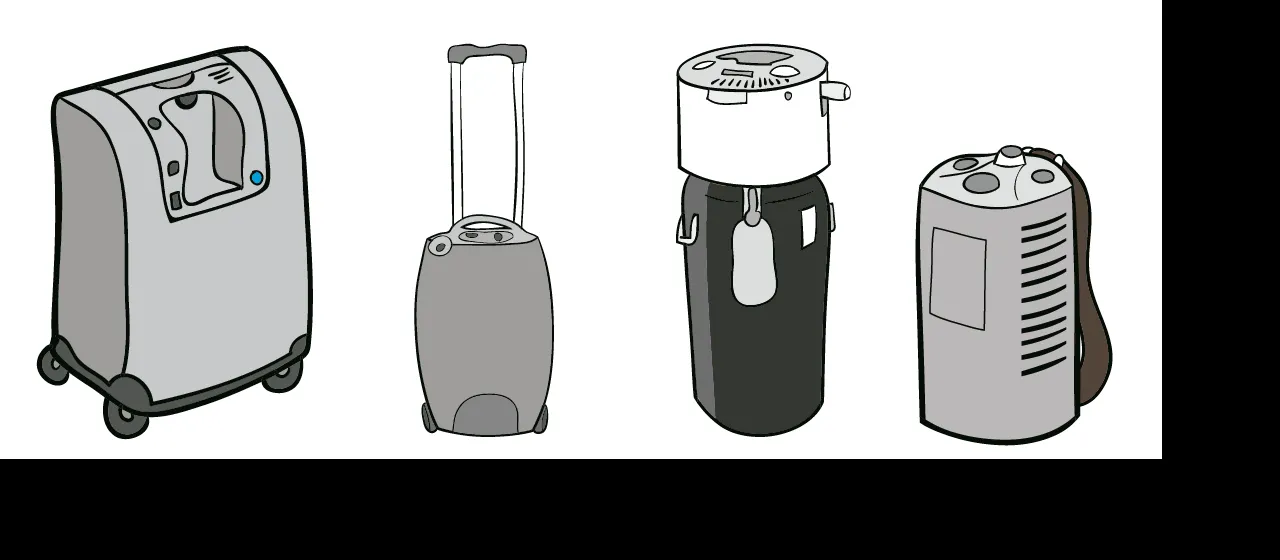
OXIGEN salud
Oxygen therapy
Oxygen therapy with medicinal liquid oxygen is an advanced and effective solution for patients with respiratory problems. It offers a highly efficient way to ensure a continuous supply of oxygen.
This method stands out for its adaptability and ease of use, which makes it a preferred option for those who need to maintain constant oxygenation.
It is supplied in fixed and mobile cryogenic containers to adapt to the patient's needs at all times. The fixed tank has a capacity of 32 liters of liquid oxygen (equivalent to 27,000 liters in gas state) at a very low temperature (-183ºC).
It can be used to fill the portable oxygen backpack (capacity of 1.2 liters of liquid oxygen), which weighs little, is small and has autonomy for a few hours depending on the prescribed flow. It must be taken into account that liquid oxygen, if not used, evaporates.
Connect the tube on the nasal cannula or mask to the oxygen outlet on the flask.
Insert the nasal cannula or put on the mask.
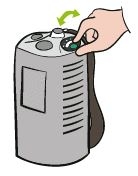
Adjust the flow rate by turning the knob until reaching the value prescribed by the doctor.
Make sure the flow rate knob is at zero.
Connect the flask to the tank by pressing down.
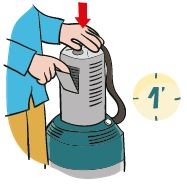
Pull down the lever on the flask and hold it there until you hear the alert sound due to the gas escaping, which indicates that the flask is full. The flask will take a minute to fill up.
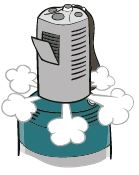
You will know when it is full because a dense white vapour will come out of the bottom.
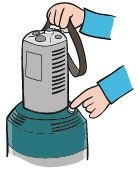
Once the flask is full, return the lever to the upright position. Remove the flask from the tank while pressing the release button on the tank.
If removing the flask is difficult, do not force it. Wait a few minutes and try again.
If any liquid oxygen is leaking, connect the flask to the tank again, wait a few minutes, then try separating the units again. If there is still a leak, connect them again and contact the technical team. If they cannot be connected, make sure the room is well-ventilated.
| Flow rate | How long the tank lasts (approx. number of days) | How long the flask lasts (approx. number of hours) |
|---|---|---|
| 0,5 l/min | 36,16 h | 25 h |
| 1 l/min | 18,06 h | 16 h |
| 1,5 l/min | 12,05 h | 10,70 h |
| 2 l/min | 9,04 h | 8 h |
| 2,5 l/min | 7,23 h | 6,40 h |
| 3 l/min | 6,03 h | 5,30 h |
| 4 l/min | 4,52 h | 4 h |
| 5 l/min | 3,62 h | 3,20 h |
The times calculated in this table may vary and are based on the following conditions: room temperature of 20°C, well-maintained equipment in good condition, normal evaporation rate (NER) within the limits indicated by the manufacturer, and proper filling in a fixed position without any movement. In any other conditions, the indicated data and results may vary.
Calculate the autonomy of your oxygen bottle
Shall we call you?